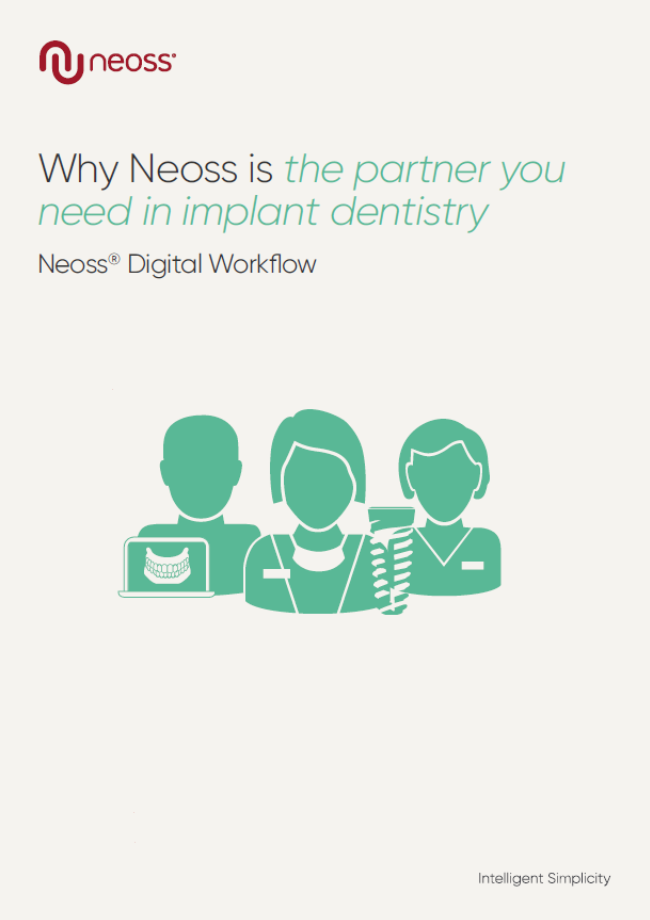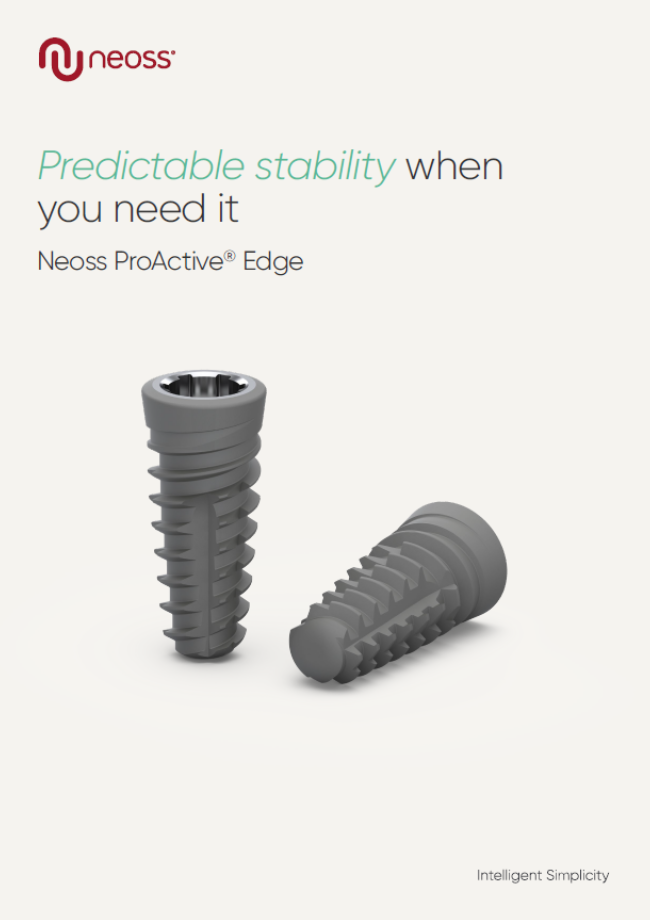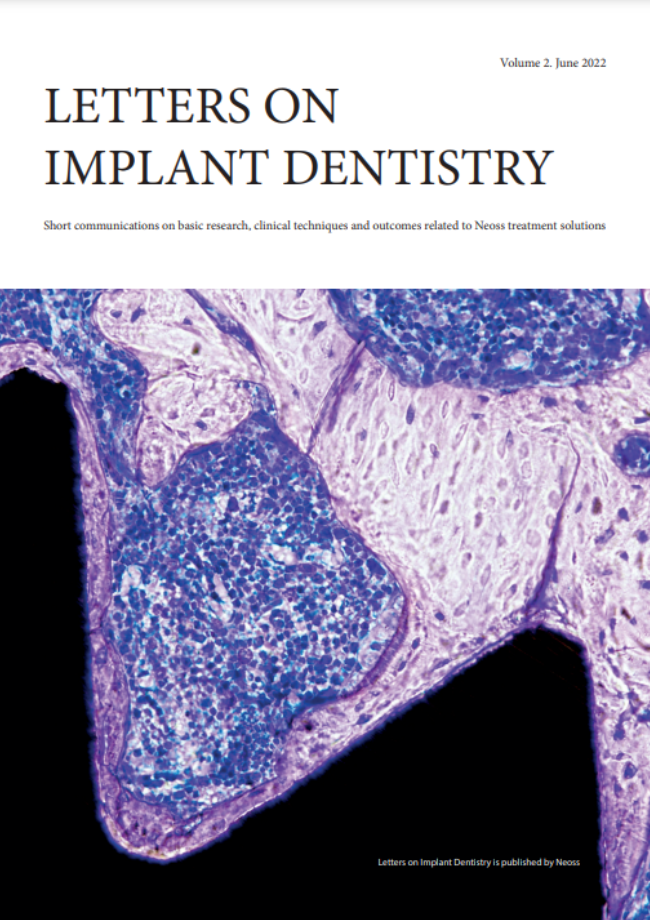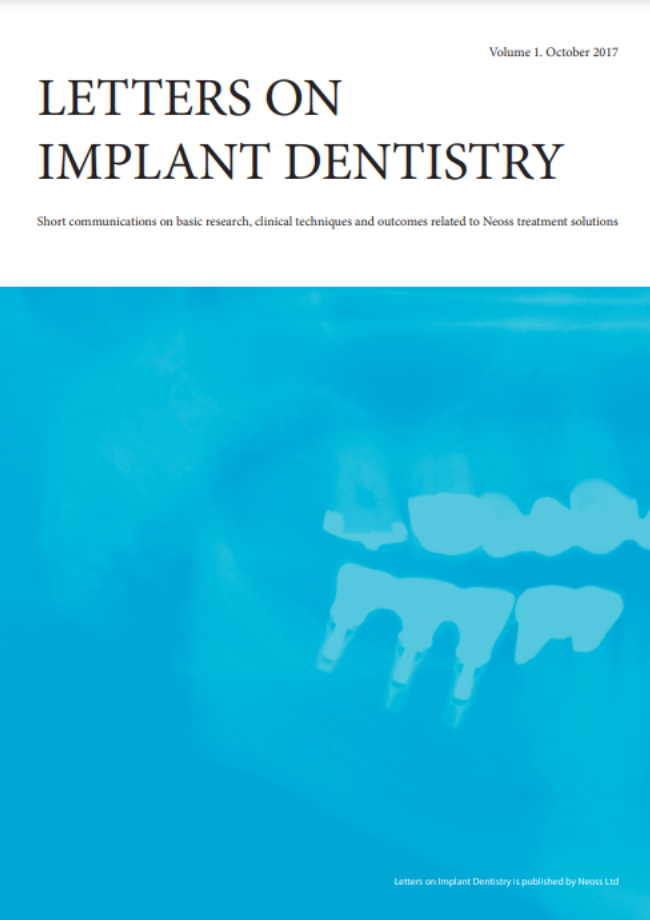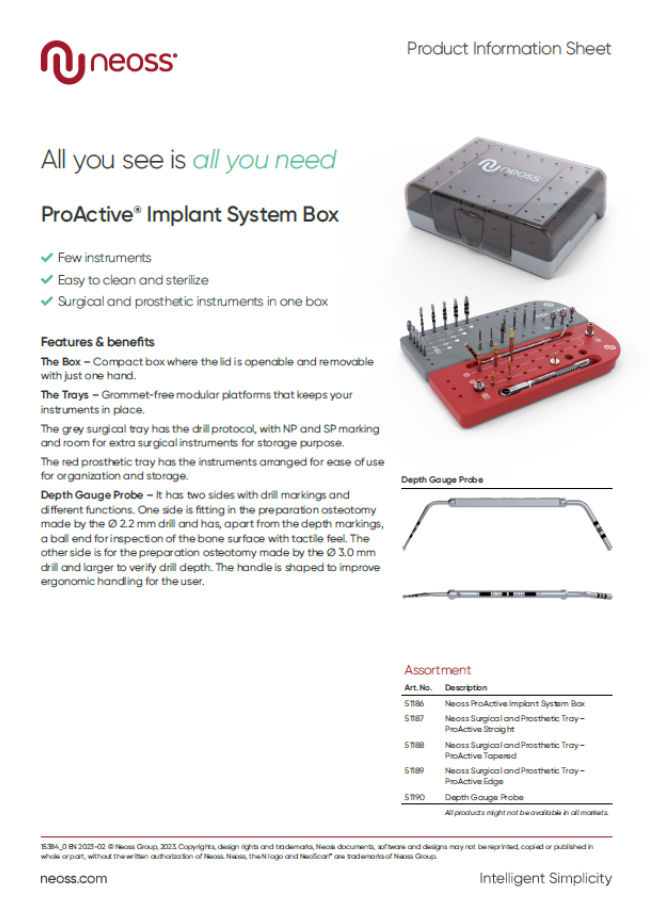Neoss ProActive® Implants
The Neoss Implant System provides solutions for a wide variety of clinical indications and treatment protocols with a rationalized assortment including short, wide and narrow implants. It provides both the surgeons and the restorative doctors the greatest possible freedom and flexibility without compromise to performance or success.
Mechanical integrity of all the components that make up a complete implant pillar is key to successful long-term tooth replacement. This is exactly what the Neoss Implant System gives you with the ProActive surface, NeoLoc connection, NeossONE prosthetic platform and much more.
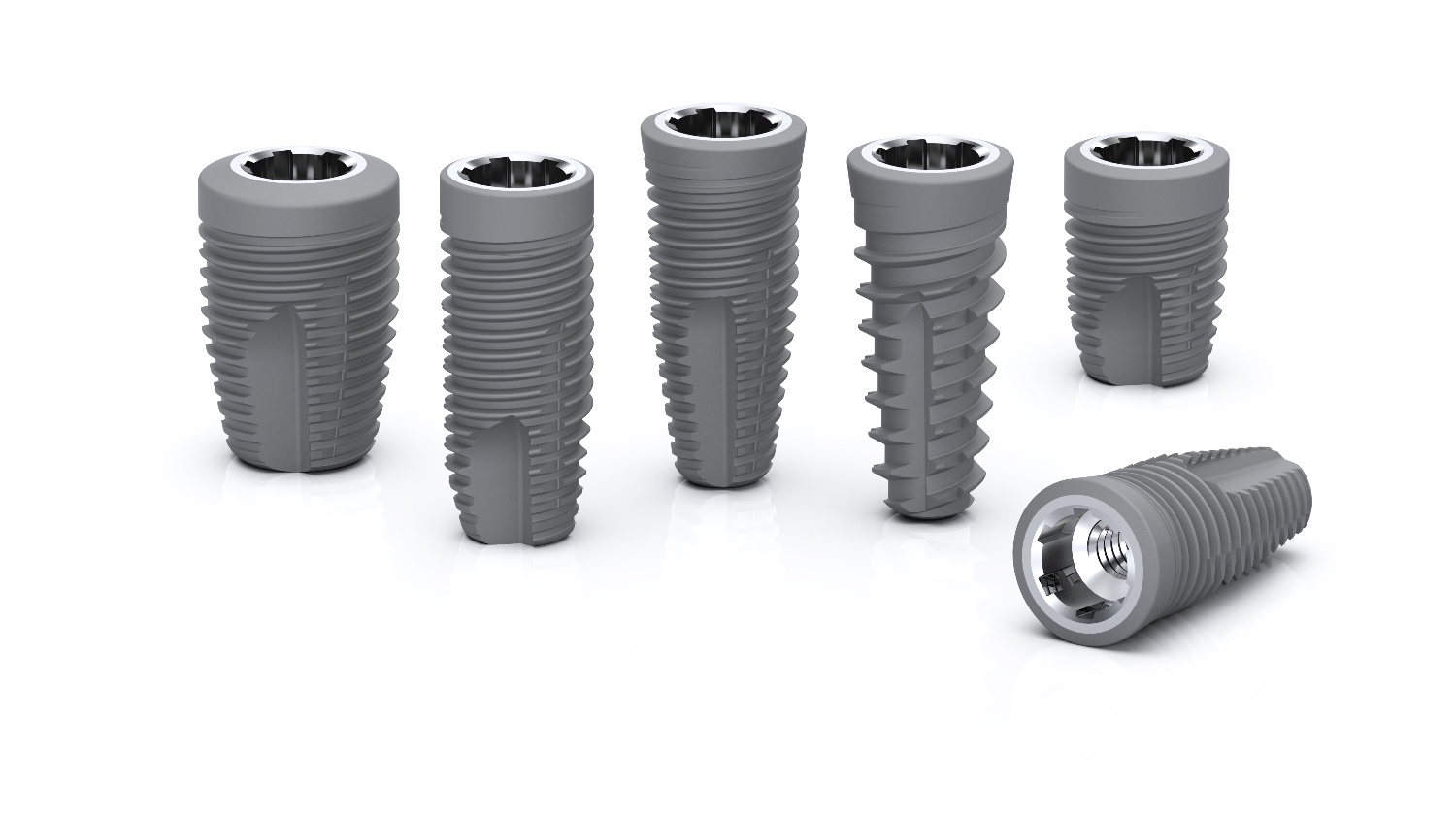
Why Neoss ProActive Implants
Over 10 years of clinical surface data and 98.6% survival rate
Our ProActive implant surface is a modern super-hydrophilic and ultra-clean implant surface that was introduced already in 2009. It has a proven clinical success and is backed up by long-term data1.
Highest quality, Commercially Pure Titanium Grade IV
All our implants are produced in Commercially Pure Titanium Grade IV. This is the highest strength pure unalloyed Titanium with high oxygen and extra high strength. Grade IV displays the highest strength of all the unalloyed CP grades.
From the start, all implants are manufactured in Sweden
Our R&D and product development team is located just steps from where Prof. Brånemark first achieved successful osseointegration using titanium dental implants in Gothenburg, Sweden during the 1950s. Like him we produce our implants in Sweden.
High primary stability
The Neoss ProActive Implant system combinines implant design, surface characteristics, and drill protocols to achieve high primary stability in all bone qualities. This allows for secure and predictable implant placement in even in challenging indications.
Prosthetic Implant
NeossONE is a solution unique to the Neoss implant system – one prosthetic platform, across three implant designs. Simply put, the same prosthetic components fit every implant. The benefits are clear: reducing patient treatment time, optimizing inventory control and patient outcomes.
Dual surface roughness
Neoss ProActive® Implants have a low surface roughness flange (Sa <0.4) designed to reduce marginal bone loss.2 At the same time, higher surface roughness of the threaded body of the implants (Sa 1.0) optimises stability and osseointegration.
Over 10 years of clinical surface data and 98.6% survival rate
Surface roughness and hydrophilicity are essential to the adsorption of proteins and biomolecules onto implant surfaces thereby facilitating healing and bone formation.3 The ProActive surface is a modern super-hydrophilic and ultra-clean implant surface that was introduced already in 2009. It has a proven clinical success and is backed up by long-term data1.
Ultra-clean, super-hydrophilic and magnesium-ion enriched
- Accelerated and increased strength of osseointegration4
- Maintained implant stability during healing5
Defined dual surface (blasted and etched) with lower roughness at implant collar
- Stable bone levels over time – Bone maintenance6
- 10-year clinical data on > 1200 patients showing > 98% cumulative survival rate6,7,8
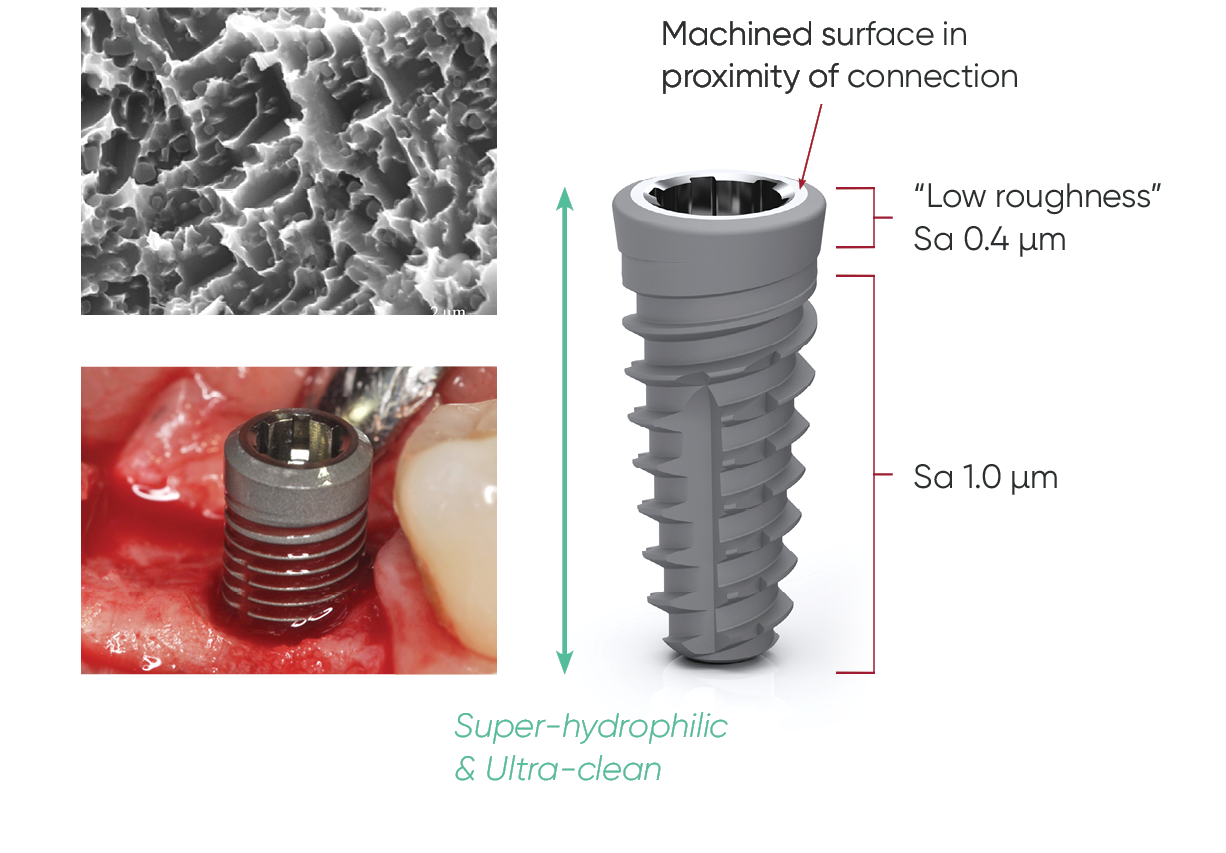
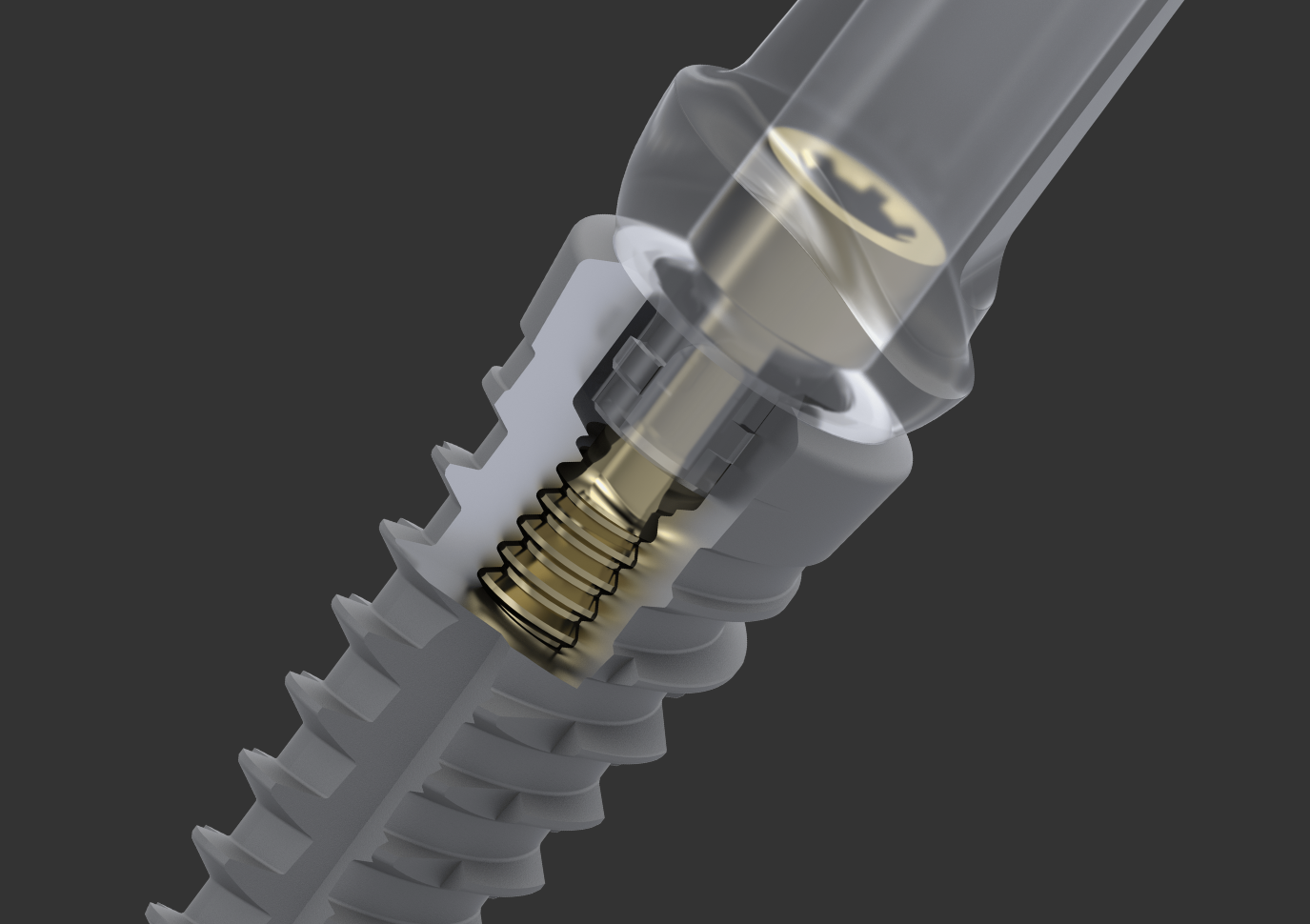
A strong and tight connection
With over 20 years of proven long-term clinical success, the NeoLoc implant to abutment connection is a remarkably strong and tight connection. It is unique to Neoss and offers high levels of bone preservation and the NeossONE ‘one connection’ concept
- Strong and tight connection
- Proven long-term clinical success
- High levels of bone preservation
Save time and money with one prosthetic platform
NeossONE is a solution unique to the Neoss implant system – one prosthetic platform, across three implant designs. Simply put, the same prosthetic components fit every implant. The benefits are clear: reducing patient treatment time, optimizing inventory control and patient outcomes.
- Reduce steps, saves time
- Less inventory and maximum flexibility
- Cost-effective solution for all
- One prosthetic platform for over 70 implants
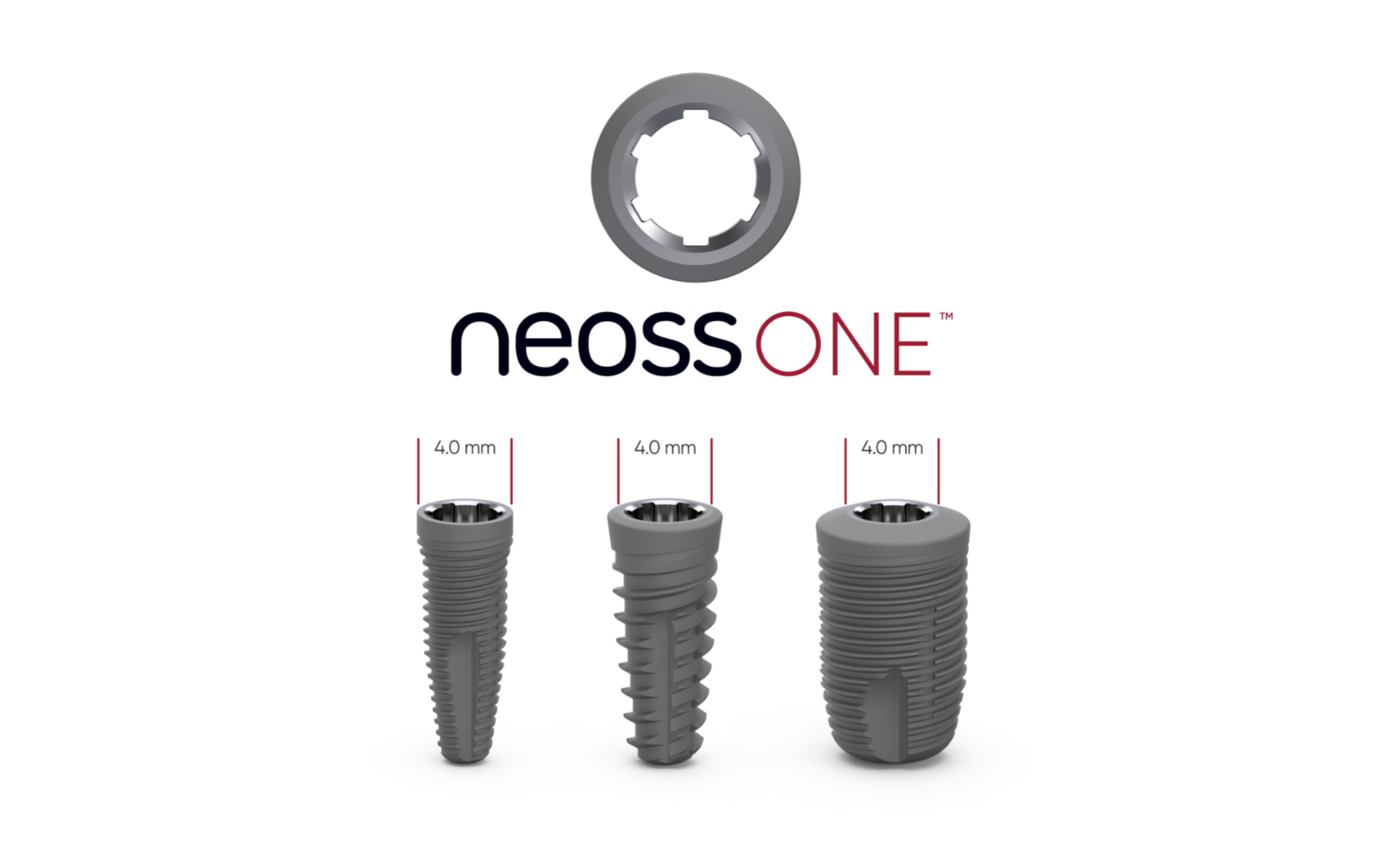
Receive the latest news from Neoss, live webinars, new products, and much more!
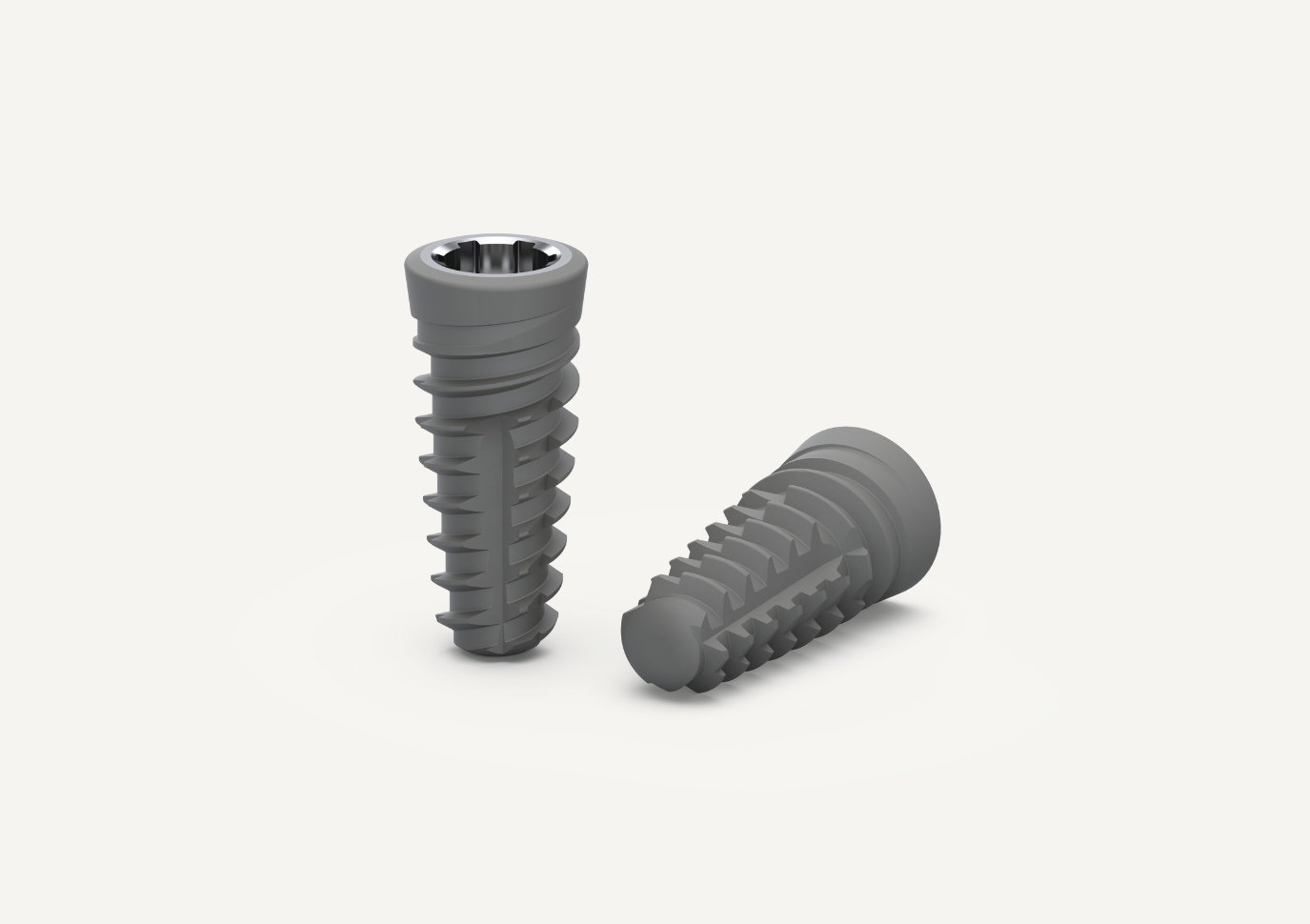
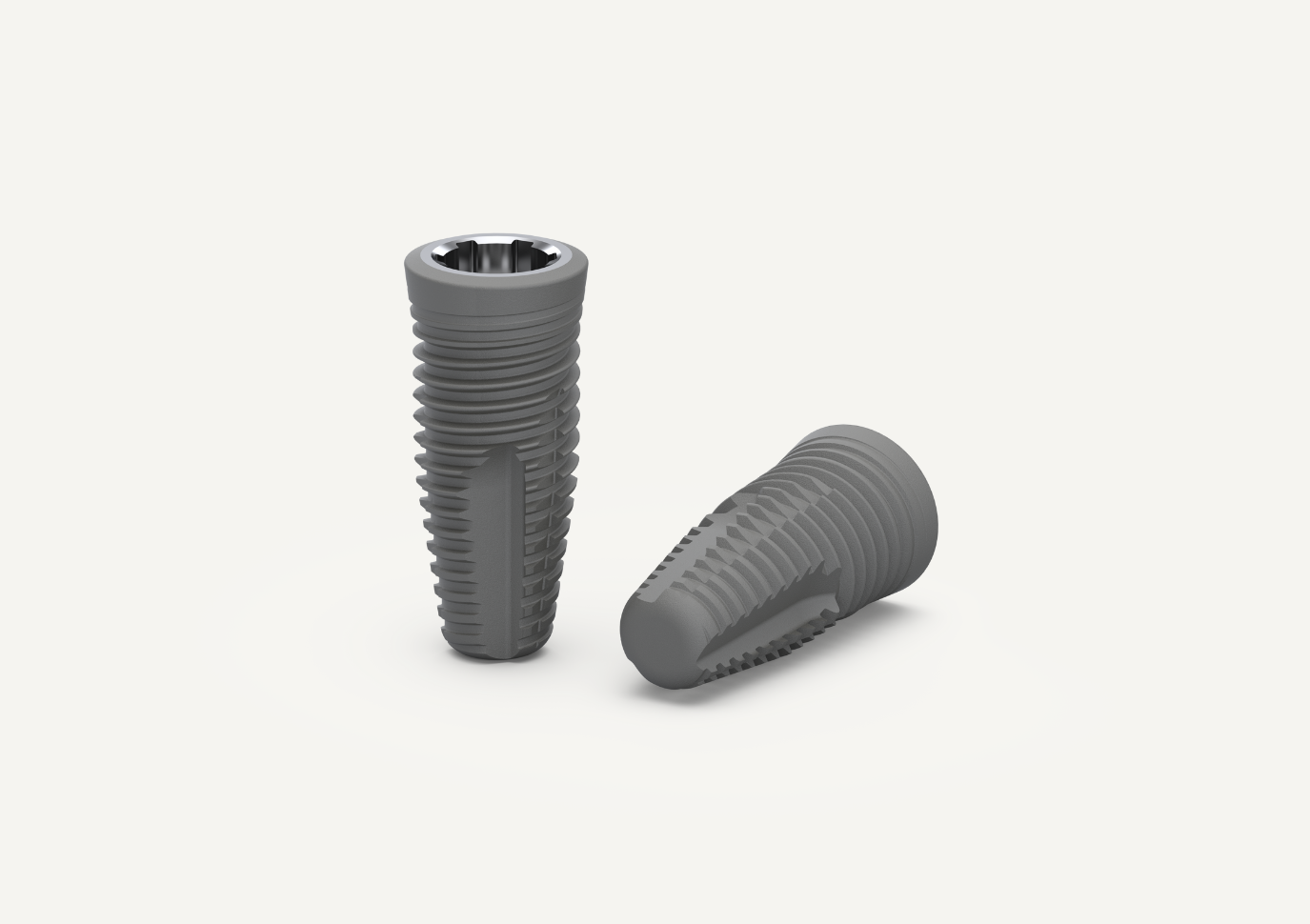
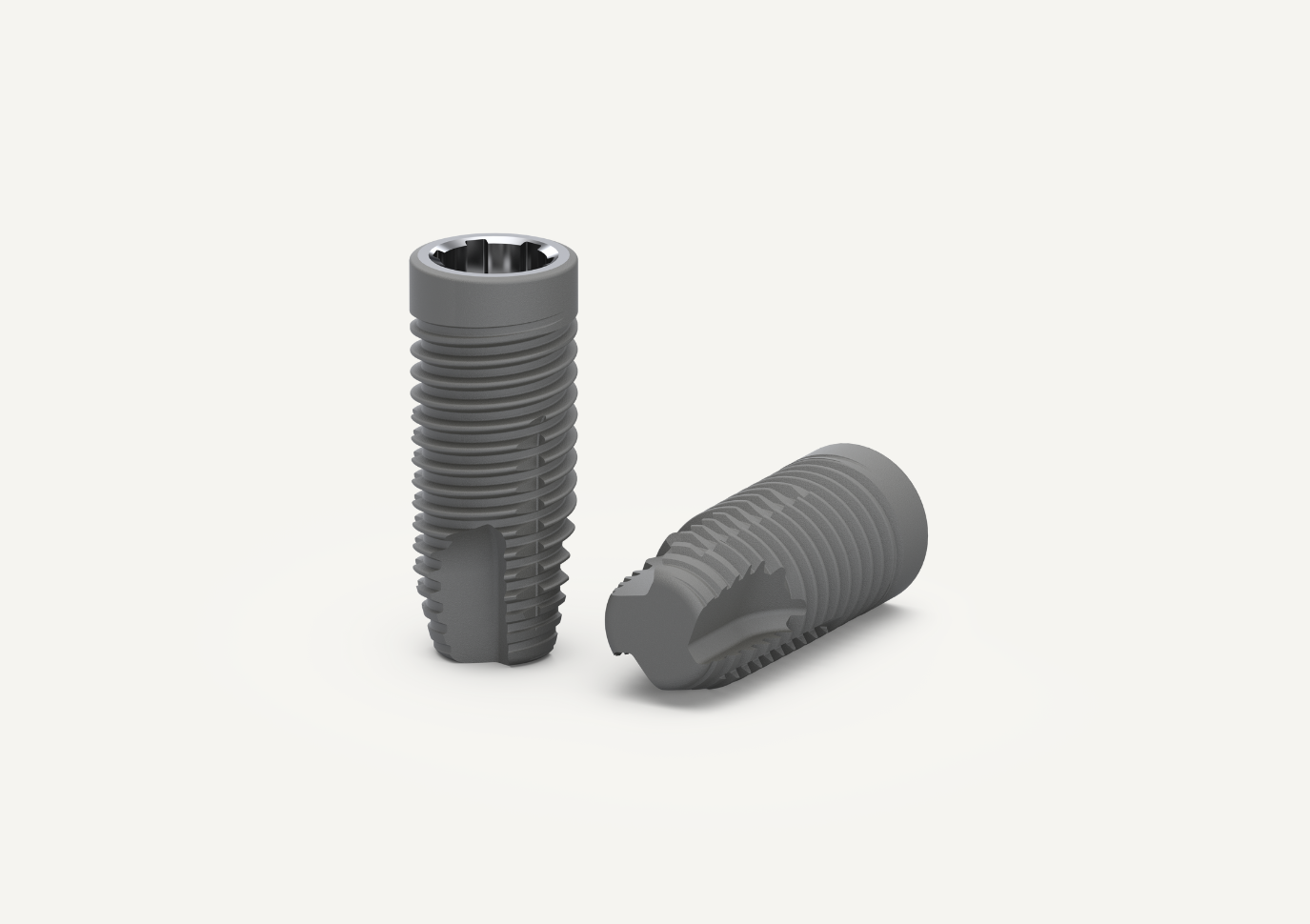
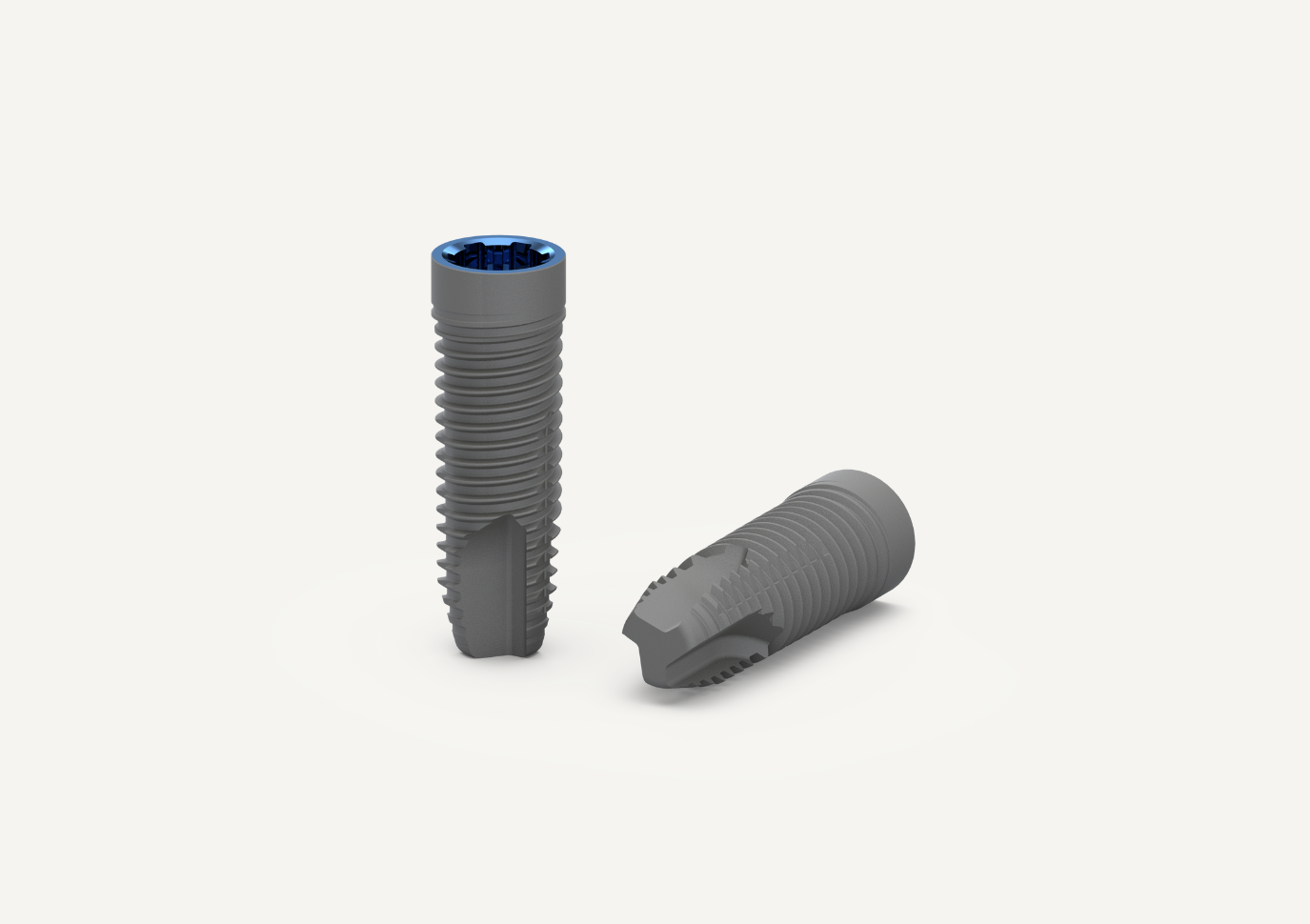
Neoss ProActive® Narrow
The Neoss ProActive Narrow Ø3.25 is one of few Ø3.25mm and smaller diameter implants that is designed for both single teeth and bridges. It delivers excellent primary stability, even in compromised sites, and can be used for Immediate loading after insertion.
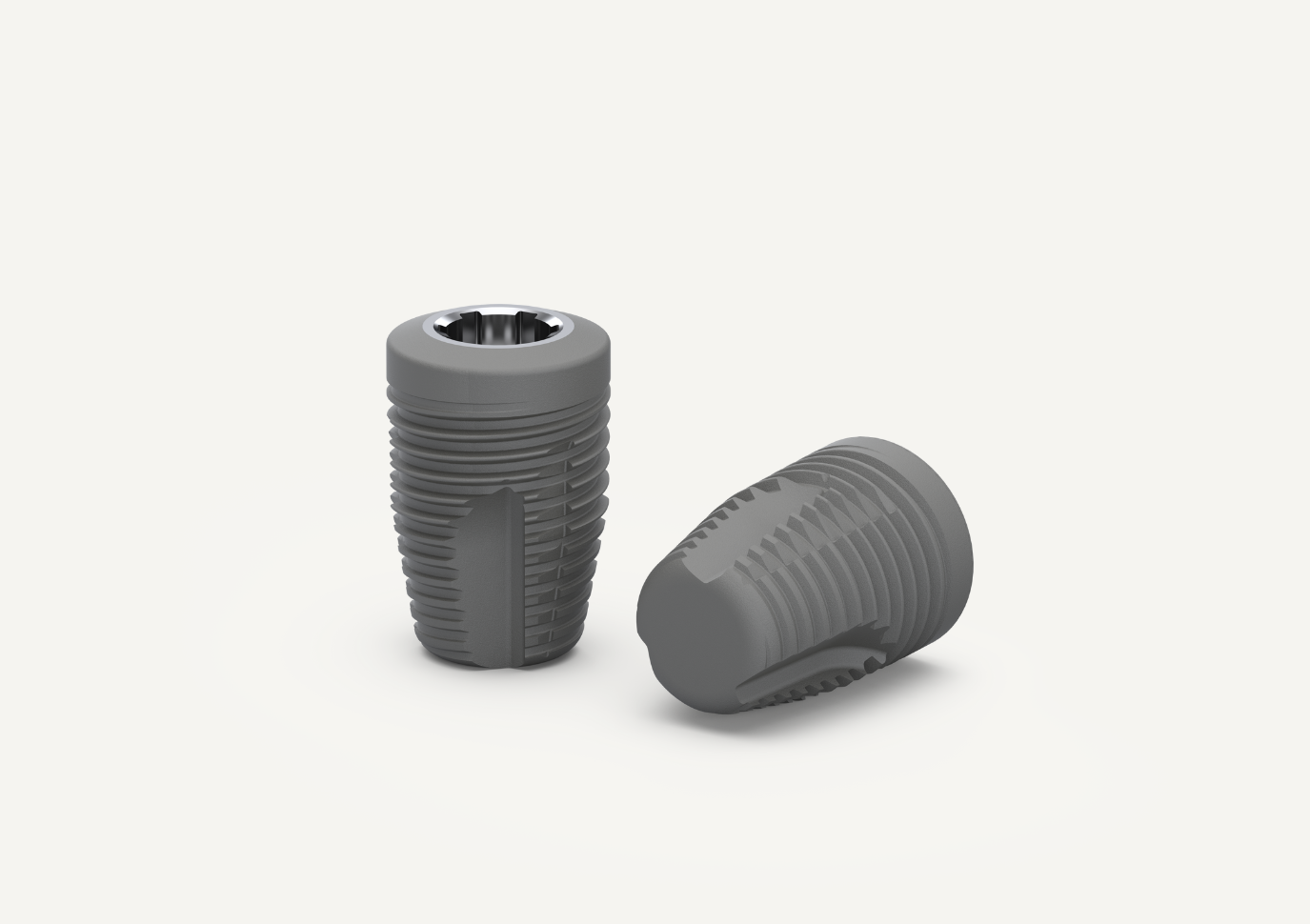
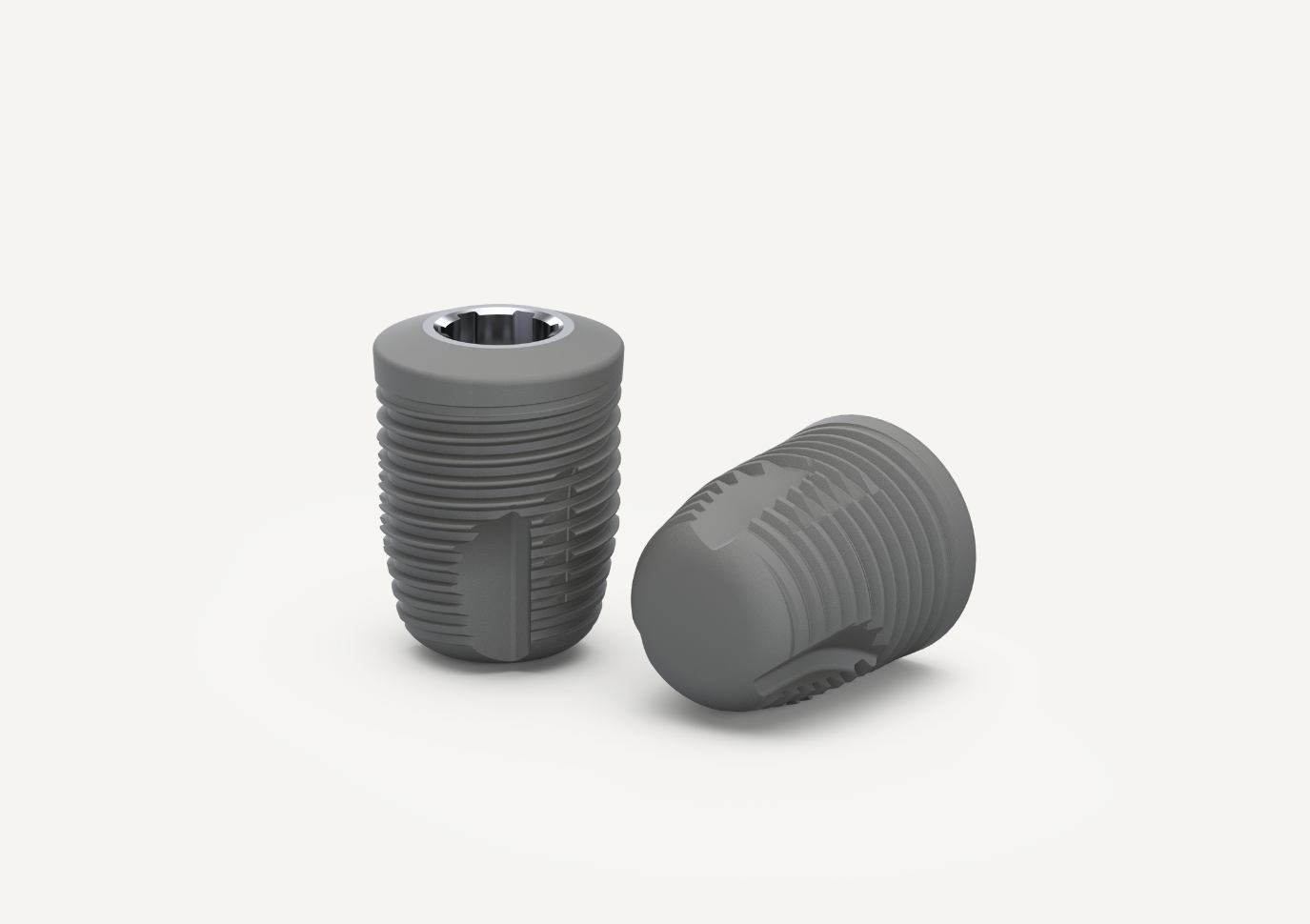
Neoss ProActive® Wide
Wide implants can provide additional means of anchorage in challenging cases, such as extraction sites, sinus floor elevations and compromised bone, when compared to narrow implants. They can also act as rescue implants when initial stability is not achieved with a narrower implant.
-1.png)
Neoss ProActive® Implants
- Fredrik E., Sennerby L. The ProActive implant surface – innovative engineering and surface technology leading to fast implant integration and predictable clinical results. Letters Impl Dent. 2022;2:6–11.
- Sennerby L, Persson LG, Berglundh T, Wennerberg A, Lindhe J. Implant stability during initiation and resolution of experimental periimplantitis: an experimental study in the dog. Clin Implant Dent Relat Res. 2005;7(3):136–40.
- Davies J, 1996. ‘Dynamic Contact Angle Analysis and Protein Adsorption’ in Davies J (Ed), Surface Analytical Techniques for Probing Biomaterial Processes, CRC Press, New York.
- Sennerby L, Gottlow J, Gottlow J. Integration of Neoss ProActive implants in comparison with other brands of dental implants. Letters on Implant Dentistry 2017:1, 7-10
- Vanden Bogaerde L et al. Int J Dent. 2016:8424931.
- Sahlin H et al. Letters Impl Dent. 2022;2:18–24.
- Sennerby L et al. Letters Impl Dent. 2022;2:29–32.
- Hassfurther N et al. LClin Oral Implants Res. 2021;32(S22):156–157.
